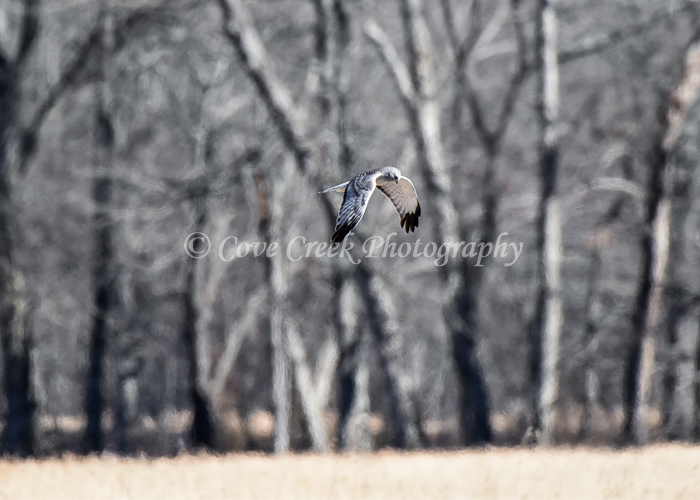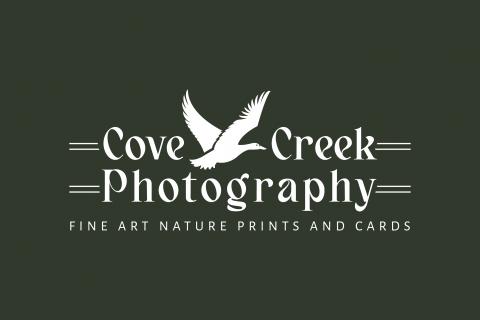
Spending a few afternoons with a gray ghost may sound eerie, but I find these visits to be quite enjoyable, particularly when armed with my camera and long lens. Of course, the gray ghost that I'm referring to is the male northern harrier (Circus hudsonius). These are magnificent birds that look like a hawk, but have the facial disc of an owl set with yellow, piercing eyes. In addition to their unique facial characteristics, male nothern harriers have long wings with black tips and black-tipped secondary feathers. Why the mysterious "gray ghost" reference? Generally, male northern harriers are seen less frequently than the females and juveniles. Additionally, female and juvenile northern harriers are brown, and the males are gray. The color of the male, coupled with its silent, slow, gliding motion while hunting prey has earned this male raptor the moniker - gray ghost.
The northern harrier's beauty and mystique make it an excellent subject for bird photographers, and preparation ensures a successful photography outing.
1) Check a range map. Depending on your location, nothern harriers may be a resident bird, or migratory and spend the winter (nonbreeding season) in your part of the country.
2) Do some reconnaissance. Because they feed on small rodents such as mice and shrews, and on the occasional small rabbit, northern harriers can be found foraging in areas with low vegetation such as old fields, cropland, and pastures.
3) Spend some time observing their behavior. If you have the luxury of being near habitat frequented by nothern harriers, it's worth it to learn their foraging times and behavior. In my area of the country (southeastern U.S.), northern harriers hunt a particular area at approximately the same time period each day, give or take 30 minutes to an hour. You will notice that they hunt on the wing, gliding slow and low over vegetation with little to no wing movement. Being aware of when they hunt and when, gives you an idea when you need to get set up prior to the bird's arrival.
If you don't have the luxury of spending a few days observing northern harriers, no worries. If you know where there is northern harrier activity, go to that area with your camera equipment and a folding camp stool (because you may be there for several hours), and use this time work out optimum camera settings and find the best place to settle in.
1) Lens - I use a Nikkor 500mm PF, and realistically that's probably the minimum lens length needed to capture a good image
2) Camera Settings - The image at the header of this blog was shot at f/6.3, 1/2000 s, ISO 800. Given the slow, gliding flight pattern of nothern harriers, I'm certain a slightly slower shutter speed (1/1600s) would work just as well.
Once you see an incoming bird, it's important to stay still and quiet. The birds have keen eyesight, and unlike other hawks, they also rely on hearing when seeking prey. So, quick movements and/or generating any type of noise will not work in your favor. Once a northern harrier has begun its foraging behavior - gliding methodically back and forth over vegetation - I have found that slow camera movement as I follow and focus, and shutter noise go relatively unnoticed by the bird.
How long will the harrier hunt the area? That depends on if and when it catches prey. If the harrier is not finding prey, it will move on to another hunting ground after 10-15 minutes, and sometimes less than that. When the bird catches prey, it may fly off; although, I have seen them start feeding on the ground where the prey was captured. An important northern harrier hunting behavior to keep in mind is when prey is captured, the harrier may bounce up and down with the prey in its talons to ensure the kill. Most of the time, the actual prey capture is obscured by vegetation, but be prepared for the harrier to bounce above the vegetation, sometimes several times. It's an excellent opportunity for a great shot!
For those that love hawks, a limited edition giclée print of a northern harrier and a holiday card with a red-shouldered hawk are available.
